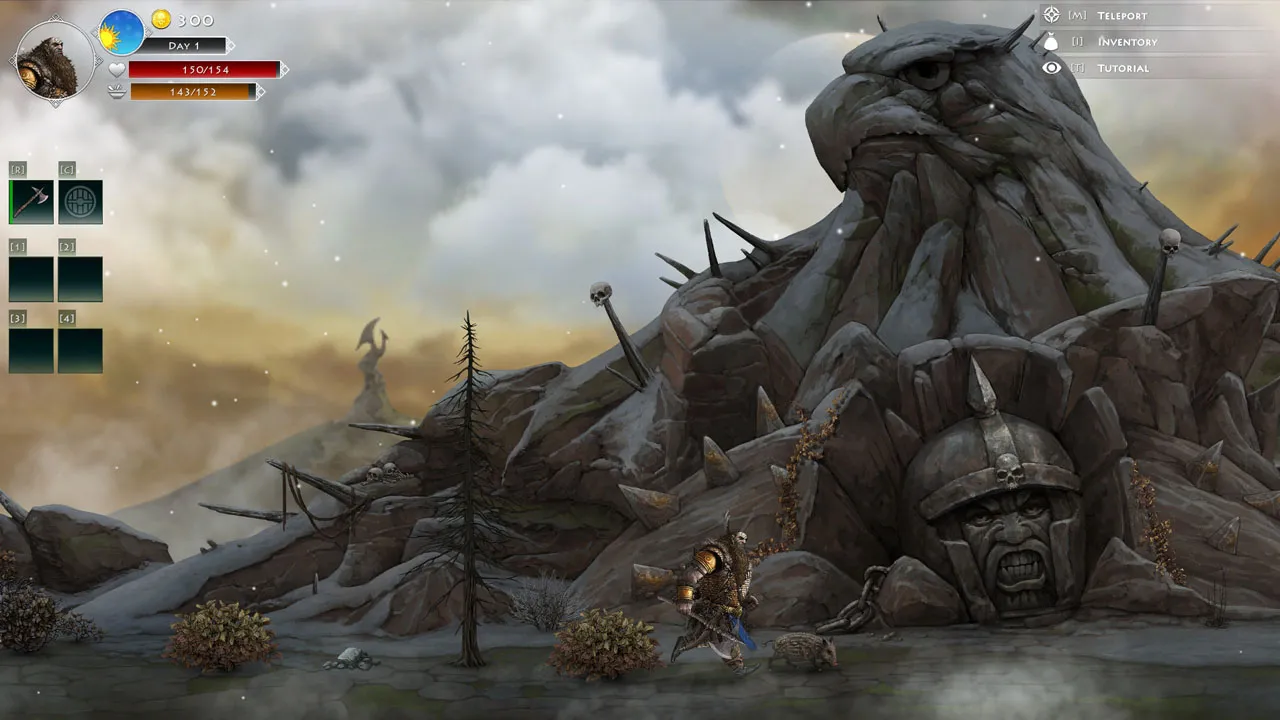
Niffelheim: A Stunning Viking Survival Game Hampered by Repetitive Gameplay
Contents
Survival. This single word encapsulates a primal instinct deeply embedded within us. While life inevitably follows a cycle of birth, growth, decay, and death, few willingly surrender to this natural flow. Humans, perhaps the most resilient creatures on Earth, have persevered through countless trials over billions of years, enduring natural disasters, diseases, and wars. This inherent drive to survive fuels the enduring appeal of survival games, tapping into our dormant primal instincts.
Modern society, with its comforts and protective laws, often dulls our survival instincts. Yet, paradoxically, the more suppressed something is, the stronger its allure becomes. Who among us hasn’t fantasized about facing dire situations, testing our ability to overcome adversity?
Survival games typically thrive on a central threat, compelling players to fight for survival. From exploring alien planets and battling zombie hordes to navigating post-apocalyptic wastelands and surviving on monster-infested islands, the genre has explored numerous scenarios. However, this has also led to a degree of stagnation, with limited themes and repetitive gameplay mechanics becoming increasingly prevalent.
Developed by Ellada Games, a small indie studio from Russia, Niffelheim attempts a fresh approach, blending survival gameplay with Viking mythology, crafting, and combat. This ambitious endeavor raises the question: does this small studio deliver on its promises?
A Visually Striking and Unique World
First impressions matter. In the gaming world, visuals often play a crucial role in capturing players’ attention. Many studios prioritize graphics, sometimes even overshadowing core elements like story, gameplay, and overall value. This prioritization is often driven by market demands, as eye-catching visuals can significantly impact sales.
While indie studios, often constrained by budget and resources, typically focus on innovative design and gameplay, Ellada Games benefits from the talents of Eduard Arutyunyan, a renowned artist. This gives Niffelheim a distinct advantage.
The game’s most compelling aspect is undoubtedly its unique and impressive art style. Embracing the Viking mythological theme, populated by skeletal undead, dragons, and giants, Niffelheim cleverly utilizes this rich backdrop to create a visually stunning world.
Arutyunyan masterfully blends the game’s dark tones with detailed hand-drawn artwork, crafting a captivating and otherworldly Viking setting. The juxtaposition of familiar elements, like fur-clad Viking warriors, with unexpected ones, like grenade launchers and Aladdin-esque caves, creates a unique and memorable aesthetic. This artistic approach immediately grabs the player’s attention.
 Niffelheim screenshot showcasing the art style
Niffelheim screenshot showcasing the art style
Repetitive Gameplay and a Confined Loop
In Niffelheim, players are tasked with building and fortifying their base while gathering resources like wood and food for survival. Resources like stone and glass are essential for upgrading equipment and structures, as well as crafting tools (axes, pickaxes) and weapons (bows, swords, axes).
During these gathering expeditions, players encounter various enemies, with difficulty increasing as they delve deeper into dark mines in search of rare resources. These mechanics are standard for the survival genre.
However, Niffelheim falters by attempting to incorporate too many elements without successfully integrating them. The game features RPG elements, including character leveling, stat increases, and skill learning. However, these aspects feel superficial, as leveling doesn’t significantly impact character power. This makes the RPG mechanics feel almost redundant.
Furthermore, the gameplay loop is rather narrow. Players are constantly engaged in a cycle of gathering, combat, base upgrading, crafting, and then more gathering. This repetitive cycle, coupled with the game’s relatively short playtime (around 15 hours for an experienced player), prevents players from truly experiencing a sense of progression.
Shallow Combat System
Despite the numerous mechanics Niffelheim attempts to incorporate, combat receives the most attention. With a variety of weapons, including melee options like swords and axes, and ranged options like bows and firearms, the game strives to deliver an engaging combat experience.
However, the execution falls short. The combat system is simplistic, with players primarily attacking and blocking. The 2D side-scrolling perspective limits movement, and unlike other 2D action games, Niffelheim lacks movement abilities like dodging or backstepping that could add dynamism to combat.
Most encounters devolve into a monotonous click-to-attack routine until either the enemy or the player dies. The underwhelming stat and skill systems further exacerbate this issue, as character power is primarily determined by weapons. Acquiring better weapons requires rare materials, obtained by defeating stronger enemies, creating a tedious cycle.
Finally, while Niffelheim excels in its visual presentation, the animation quality is lacking. Despite the detailed character and monster models, the animations appear stiff and awkward. In an action game, animations are crucial for conveying the impact of combat. This shortcoming significantly detracts from the overall experience.
Conclusion
Niffelheim presents a captivating Viking world with a stunning art style. However, its repetitive gameplay loop, shallow combat system, and underwhelming RPG elements ultimately hold it back. While the game shows promise, these shortcomings prevent it from reaching its full potential. The developers at Ellada Games clearly have artistic talent, but further refinement of the core gameplay mechanics is needed to create a truly compelling survival experience.





Comments (0)